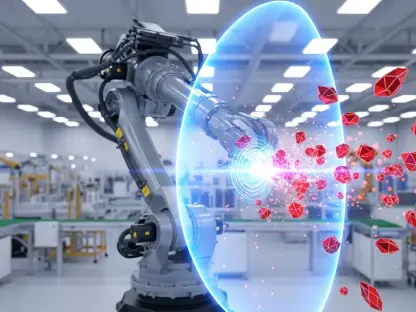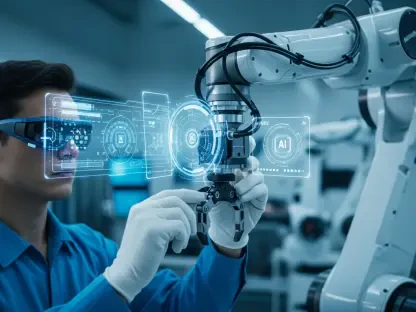Polymethyl methacrylate (PMMA), commonly known as acrylic or acrylic glass, is a thermoplastic material celebrated for its exceptional optical clarity, weather resistance, and versatility. This material is widely used in various industries, from automotive to medical devices, due to its lightweight, durable, and UV-resistant properties. However, achieving precision and quality in PMMA machining requires a thorough understanding of its properties and the application of specific machining techniques. Understanding these aspects is essential to successfully working with PMMA and achieving high-quality results in its applications.
Recognized by brand names like Plexiglass, Acrylite, and Lucite, PMMA’s transparency and resistance to shattering make it an excellent alternative to glass in many scenarios. Its lightweight nature and durability further contribute to its popularity across various applications. For instance, in outdoor settings, PMMA’s resistance to UV light and adverse weather conditions makes it an optimal choice for signage and displays. However, it is equally favored in the automotive sector for parts like headlights and taillights and in the medical field for prosthetics and surgical instruments. While the material boasts many advantageous properties, understanding its brittleness and sensitivity to heat is crucial for those involved in the machining process to avoid potential issues such as chipping, cracking, and melting.
Understanding PMMA Properties
When it comes to PMMA machining, being well-versed in the material’s properties is the first step toward achieving precision and quality. As a transparent thermoplastic, PMMA is frequently used as a shatter-resistant alternative to traditional glass. The material is lightweight and durable, known by brand names like Plexiglass, Acrylite, and Lucite, making it suitable for a wide range of practical applications. One of its notable characteristics is resistance to UV light and weather conditions, which makes it ideal for outdoor applications such as billboards, signage, and displays.
Additionally, PMMA’s excellent optical clarity and impact resistance make it a preferred choice in the automotive industry, particularly for components like headlights, taillights, and windows. Its biocompatibility also lends itself well to the medical industry, where it is used in prosthetics, surgical tools, and diagnostic devices. These qualities contribute to the material’s widespread application across industries. However, PMMA’s brittleness and sensitivity to temperature necessitate particular care during machining. Manufacturers must be cognizant of these characteristics to mitigate issues that may arise, such as chipping, cracking, or melting, to successfully transform PMMA into functional and aesthetically pleasing components.
CNC Machining Techniques for PMMA
CNC machining stands out as the most efficient method for shaping PMMA, including techniques like milling, turning, and drilling. Each technique is paired with a set of best practices that can help realize high-quality outcomes. For instance, CNC milling employs rotating cutting tools to remove material, enabling the creation of precise cuts such as slots, holes, and intricate 3D contours. To prevent the material from melting, it is crucial to use exceptionally sharp cutting tools and maintain lower cutting speeds, as high temperatures can easily distort PMMA. Appropriate application of coolants ensures temperature regulation and minimizes the risk of heat buildup.
CNC turning, another essential technique, is ideal for forming cylindrical shapes, threads, or grooves in PMMA workpieces. This procedure involves rotating the PMMA workpiece while a stationary cutting tool systematically removes material. To achieve a smooth and glossy finish, it is imperative to employ slow spindle speeds and exert minimal cutting forces. Complementary finishing steps, such as polishing or buffing, can further elevate the surface quality, making the final product visually appealing and functionally superior.
Drilling, though effective, poses its own set of challenges when applied to PMMA. The heat generated during the drilling process can result in cracking or even burning of the material. To counter these risks, manufacturers should utilize specialized drill bits designed specifically for PMMA, maintain low speeds, and apply steady, consistent pressure. Coolants play an indispensable role in this context, providing effective heat management and thus preserving the integrity of the drilled PMMA.
Overcoming Challenges in PMMA Machining
Although PMMA is relatively simple to machine, it presents several challenges that manufacturers must address to ensure high-quality results. One of the predominant issues is managing heat generation. PMMA’s sensitivity to elevated temperatures can lead to undesirable outcomes such as melting, warping, or cracking. Proper feed rates, cutting speeds, and diligent use of coolants are essential to control the heat produced during the machining process. Manufacturers can achieve precise and clean cuts without compromising the material’s structural integrity by carefully monitoring these variables.
Another significant challenge in PMMA machining is preventing chipping and cracking. Due to its inherent brittleness, PMMA is prone to such damage, particularly when making fine cuts or handling thin sheets. Using sharp cutting tools and selecting appropriate feed rates can considerably reduce these risks. Additionally, employing post-machining finishing techniques like polishing or buffing can mitigate any minor imperfections, contributing to a smoother and more visually appealing final product.
Achieving a high-quality surface finish on PMMA can also be a formidable task. The material’s tendency to scratch and smudge easily necessitates meticulous handling. Post-machining processes, such as polishing and buffing, are often required to attain the material’s characteristic glossy finish. While these steps may add to the overall manufacturing time, they are crucial for enhancing the appearance and functionality of the finished product. Manufacturers who invest in these additional finishing stages can produce PMMA components that stand out in terms of both quality and aesthetics.
Advantages of PMMA Machining
PMMA offers several compelling advantages in CNC machining, making it a preferred material choice for a wide array of industries. One notable benefit is its exceptional optical clarity. PMMA allows up to 92% light transmission, rendering it ideal for applications where transparency is paramount, such as in optical lenses or display panels. CNC machining permits precise adjustments, tailoring both functional and aesthetic components to meet stringent requirements, ensuring high-quality results from start to finish.
Another significant advantage of PMMA is its lightweight nature, which makes it a practical alternative to glass, especially in fields like automotive and aerospace. Its reduced weight without compromising structural integrity allows for easier handling and installation, leading to more efficient and cost-effective production processes. This material’s adaptability in CNC machining also offers tremendous design flexibility, accommodating intricate and customized shapes that other materials might struggle to achieve.
Durability and resistance are additional attributes that bolster PMMA’s prevalence in various applications. The material’s inherent resistance to weathering and UV light makes it an excellent choice for outdoor uses, such as signage and displays, where long-term exposure to environmental elements is a concern. PMMA also boasts high impact resistance compared to glass, contributing to a more robust and safer end product. These properties combined with its ease of machining facilitate design innovation while expediting production timelines, making PMMA a versatile solution for numerous engineering and design challenges.
Applications of PMMA Machining
PMMA’s versatility allows its use across various sectors, each benefiting from its unique properties and the precision afforded by CNC machining. In the automotive and aerospace industries, for example, PMMA is highly valued for its lightweight yet durable nature. Car headlights, taillights, and windows frequently incorporate PMMA for its optical clarity and impact resistance, enhancing both safety and aesthetics. Similarly, in the aerospace sector, PMMA is used for cockpit windows, lighting systems, and lenses for navigation equipment, providing both functionality and exceptional clarity.
Beyond these high-demand sectors, PMMA also finds significant application in signage and displays. Its excellent optical clarity and ease of shaping make it ideal for illuminated signs, display cases, and protective covers. These characteristics ensure that PMMA displays stand out in terms of both visual appeal and durability. The material’s resistance to UV light and adverse weather conditions further makes it suitable for long-term outdoor use.
The medical field is another domain where PMMA’s properties are extensively leveraged. Its biocompatibility and transparency make it suitable for use in prosthetics, lenses, and diagnostic tools. Medical devices require materials that are both durable and safe for human contact, and PMMA meets these criteria effectively. Furthermore, the material’s ability to be accurately machined into complex shapes ensures that medical devices perform optimally, reflecting the high standards required in this industry.
Conclusion
Polymethyl methacrylate (PMMA), more commonly known as acrylic or acrylic glass, is a thermoplastic praised for its outstanding optical clarity, weather resistance, and versatility. Its lightweight, durability, and UV-resistant attributes make it a go-to material across numerous industries, such as automotive and medical devices. Brands like Plexiglass, Acrylite, and Lucite have popularized PMMA, highlighting its transparency and shatter resistance, positioning it as a superior alternative to traditional glass in many situations.
PMMA is particularly valued in outdoor applications due to its ability to withstand UV exposure and harsh weather, making it perfect for signage and displays. The automotive industry relies on it for components like headlights and taillights, while the medical sector uses it for prosthetics and surgical instruments. However, to achieve precision and high quality in PMMA machining, it’s essential to understand its properties and employ specific techniques. Recognizing its brittleness and sensitivity to heat is vital, as improper handling can lead to chipping, cracking, or melting, undermining the material’s many advantageous properties.









